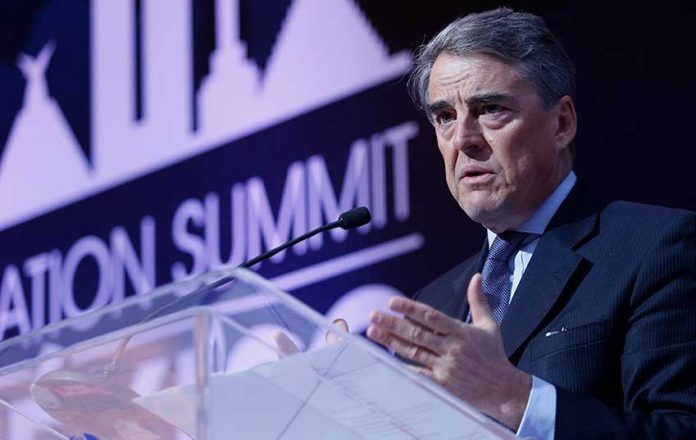Operating three airports within close proximity to each other in Mexico City and México state will be “complex” and “challenging,” according to the head of the International Air Transport Association (IATA).
“The government’s plan is for three airports to serve Mexico City: the current one, Toluca and the Santa Lucía airbase. I will be frank. Making this work will be challenging,” Alexendre de Juniac said yesterday at an IATA aviation summit in Mexico City.
The former Air France CEO outlined a range of challenges that will arise from operating the three airports simultaneously as well as limitations of each individual one.
The Mexico City airport “is already operating above its design capacity,” de Juniac said, adding that “converting the government hangar to a terminal is unlikely to meaningfully improve the situation when there is no practical way to add a third runway.”
Toluca Airport’s single runway “can certainly be utilized more fully” but will likely only be used for domestic flights, de Juniac said, adding that the distance of 70 kilometers to the Mexico City airport “makes efficient connections nearly impossible.”
He also said that converting the Santa Lucía air force base in México state “will take time and significant investment” and that “the military will have to gain experience in running a civilian airport.”
That is a “very different thing” to running an airbase, de Juniac added.
“Even when we resolve the airport issues, we have a potentially even bigger challenge to provide safe and efficient air traffic management. The three airports are in very close proximity and the runway orientations are not parallel which makes it complex. Landing and take-off paths are further restricted by mountainous terrain. And high altitude with seasonally hot temperatures are an additional factor which need to be taken into account,” he said.
“I cannot over-emphasize the need for technical coordination with operators to carefully manage these parameters. Safety must never be compromised. And we don’t want to find that investments in these three airports are compromised by air traffic management requirements that ultimately limit their utilization. Getting air traffic management right is mission-critical,” de Juniac added.
The IATA chief said it was “no secret that we are disappointed with the decision to discontinue” the new Mexico City airport, which “would have secured Mexico City’s long-term position as a major global player in the aviation industry.”
However, de Juniac also said that “we accept that a decision has been made” and that “IATA is eager and fully committed to work with the government to find the most effective way to prepare Mexico City – and indeed the entire Mexican industry – to meet the growing demand to fly.”
Communication and Transportation Secretary Javier Jiménez Espriú agreed with the IATA boss that operating three airports will be challenging but stressed that the government is working to ensure that there will be no risks associated with their simultaneous use.
He explained that Navblue, a Canadian subsidiary of Airbus, will be responsible for restructuring the use of airspace so that flights can take off from and land at the three airports at the same time.
“It must be said that a large part of the work was already started by the Navigation Services for Mexican Airspace [Seneam, a government agency],” Jiménez said.
They [Navblue] told us in a first estimate that it would cost US $6 million but seeing the progress of Seneam, the quote will be less.”
The secretary added that French airport operator Aéroports de Paris is collaborating on the development of the master plan for the Santa Lucía airport, which will be built by the Secretariat of National Defense (Sedena).
Jiménez conceded that the government hasn’t yet provided detailed information about its plan at Santa Lucía, explaining that reaching agreements with investors involved in the canceled airport project was a constraining factor.
However, President López Obrador will announce details soon, he said.
Jiménez also said that it was likely that most airlines would only operate at one of the three airports in the greater Mexico City area to avoid logistical problems. All airport stakeholders will be involved in logistics planning for the three airports, he explained.
Meanwhile, materials purchased to build the cancelled airport project in Texcoco, México state, will either be put up for sale or used in other government infrastructure projects.
Tezontle and basalt, two volcanic rocks widely used in construction, could be used in the construction of the Maya Train or Isthmus of Tehuantepec train projects, Jiménez said.
Source: El Economista (sp)
